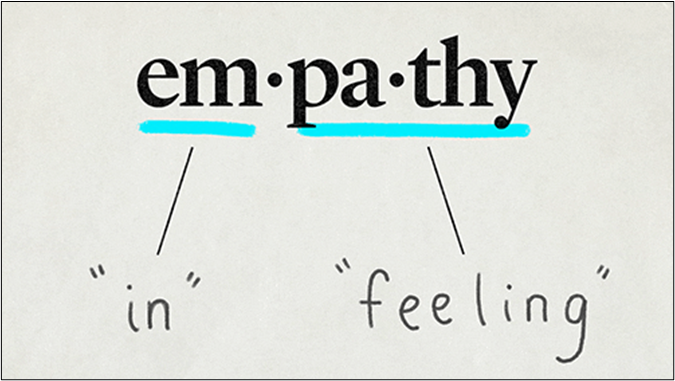Week 2 Overview: Empathize
Introduction:

This week we’ll build off our foundational understanding of the design thinking process by focusing on its seminal step: empathizing with your target users. What is empathy and how does it relate to design? Because design thinking is intended to be a human-centered problem-solving process, empathy is inextricable. Understanding how to empathize with your target users allows you to better understand their problems, their needs, and how they may interact or react to your proposed design solutions. We’ll unpack the concept of empathy and its relationship to human-centered design this week, and apply our understanding of empathy and design by conducting our own stakeholder analyses for our design projects.
Course Competencies:
- Develop a strong understanding of the design thinking process and how it can be applied in a variety of industry settings.
- Understand the terminology and conceptual models used in design disciplines.
- Recognize the ethical and social dilemmas and obligations of the practice of design.
- Diagnose common adoption barriers in individuals, groups and organizations.
- Participate in and lead innovation in creative and collaborative settings.
- Undertake complex and unstructured problem-solving challenges in unfamiliar domains.
- Identify the necessary skill sets and mindset to practice design thinking.
- Utilize a human-centered approach to research to understand and tackle complex social problems and build empathy for target audiences.
- Create prototypes and/or proof of concepts for user testing.
- Develop and test innovative ideas through a rapid iteration cycle.
Learning Objectives:
- Think about empathy and related concepts in a new way.
- Consider the possible outcomes of misaligned empathy in design practice.
- Understand the importance of the designer’s critical reflection prior to well-meaning intervention.
- Consider the broad spectrum of stakeholders differently impacted by design decisions.
- Become familiar with different types of design deliverables typically used in professional contexts.
To-Do List: (in sequential order)
- Reading/Viewing:
- The Paradox of Empathy
- Amélie “Helping” a Blind Man
- The Fabulous Kindness of Amelie Poulain?
- Why the “Golden Rule” Is Terrible for Everyone
- Discussion Board:
- Empathy Misalignment
- Assignment:
- Research Deck
- Stakeholder Analysis
- Reading/Viewing:
- How to Perform a Stakeholder Analysis
- Reading/Viewing:
- Discussion Board:
- Weekly Progress Report